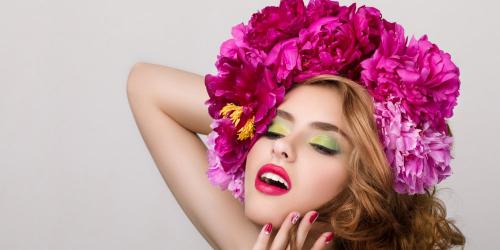The wedding dress according to the fashions
At the heart of the wedding, your wedding dress sought or made for long months will be the queen of a single day. But it has not always been so. Well before adopting the traditional white dress, the girl simply chose among her everyday outfits the dress that had the best color. It is only since the Middle Ages that the wedding attire is purchased. His style is determined by the rank and resources of the young couple.
As for the systematic use of white for the ceremony, it comes from the Church. It was in fact, from the 16th century onwards, that the publication of banns, the presence of witnesses, and the parish priest, prescribed "solemnity and brilliance" for the performance. The white dress, the last litter by the girl before her entry into the world, is exclusively designed for this solemn ceremony.
The following centuries, with the dramatic transformations of fashion and the multiplicity of styles, the bride will try to personalize her dress of modern times to the maximum. This is how the twentieth century saw the appearance of sensual brides who dare transparency, tulle and lace, and seek originality.
The creators of high fashion seize it then and give themselves to heart joy, giving free rein to their imagination. And it is not by chance that their parades are closed on the wedding dress: the consecration of a successful union between the world of fashion and nuptiality.
Before the traditional white dress
Like men, women have been content to wear tunics for centuries. They were more or less belted and of varying length, they were made of linen, wool or hemp - the silk being reserved for the elite - and the fabrics were sometimes decorated with colored bands and gold or silver threads . More than form or even color, it was the luxurious aspect of the fabric and the quality of the weaving that mattered.
One element upsets the fashion in the 14th century: while the masculine outfit is shortened, the feminine garment adjusts to the body. For the first time, the bust is enhanced by seams and laces: the contemporary silhouette is born. New materials appear: cotton, velvet and fur. The splendors of the Renaissance will do the rest.
The waist, by a belt placed under the breasts, is highlighted, the draws of the robes lengthen the silhouette, the neckline is accentuated. Lace, stripes, ribbons, gold and thick velvet tributary of Italy. In the 16th century, the "vertugadin" - skirt surrounded by a ring of wicker, ancestor of the basket and the crinoline - and the "body piquet" or corset turn feminine fashion. The colored skirts will then overlap and the materials will mix.
Sophistication is pushed to the extreme with the very voluminous "volantes" dresses of the XIXth century which, after the French Revolution, will be worn only during the marriages of the royal court.
The modern wedding dress
When the white emerged at the end of the XVIIIth century, the French Revolution introduced the return to the simplicity of the lines. The dress in white cotton muslin in one piece then appears: the silhouette of the bride is the same as the communicant, just amplified by ruffles.
A product of Parisian fashion, the white dress slowly settled in the provinces. The regional costume is still very anchored in the French campaigns of the nineteenth century and the bride is often still in black.
New technologies and new materials are emerging with the industrial revolution. Some "fashion merchants" are beginning to specialize in marriage and are quickly followed by department stores. The wedding dress is then a transposition of the ball gown, very in vogue, with a closed bodice for the religious ceremony and another more décolleté for the evening.
With the 20th century, the corset disappears and the dress shortens. In the thirties, city or evening attire, the wedding dress is mid-calf, then under the knees after the second world war. Without a distinctive cut, it is more than ever a reflection of fashion. In the 50-60's, the market for the wedding dress is at its peak. Fashion magazines advise young girls to transform them into summer dress, cocktail or evening dress. From this point of view, the dressmakers use light materials: organdi, satin or canvas.
Paradoxically, in the 70's, the wedding dress draws its inspiration from the history and tradition with the creation of typical characters: "dresses Sissi", "Amboise" ... Two styles are opposed since: the white dress " fairy tale "and that resolutely modern with unique colors and materials. And there, everything becomes possible!


